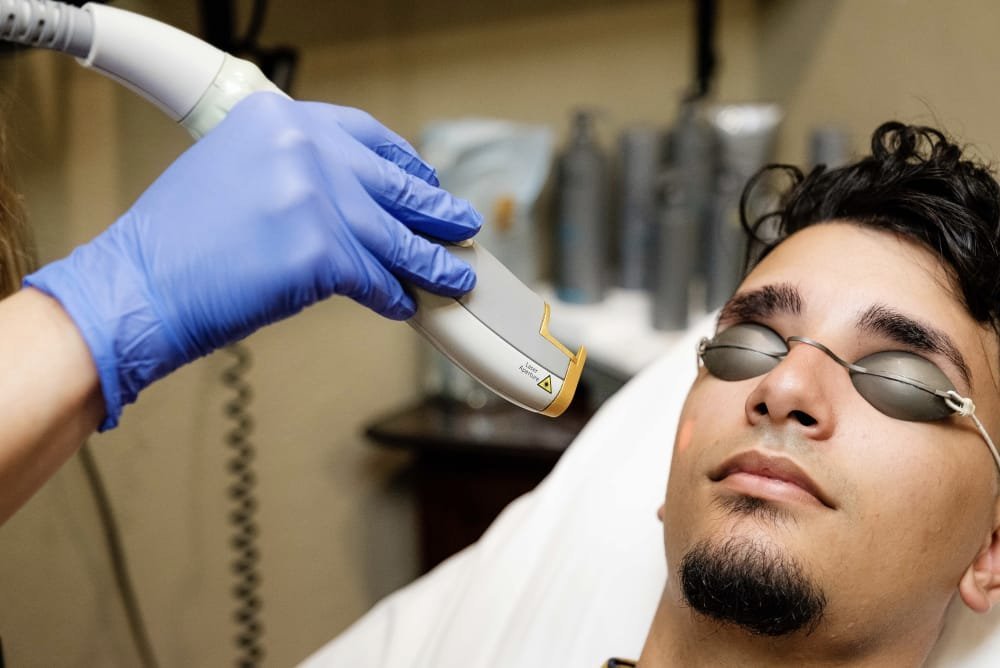Acne is often perceived as a problem primarily affecting teenagers or women, but the truth is, acne affects millions of men worldwide — from adolescence into adulthood. Men face unique challenges when dealing with acne, including more severe outbreaks, thicker skin, and the potential for deep scarring. Luckily, acne laser treatments offer highly effective solutions tailored to men’s specific skin needs. If you’re wondering whether acne laser treatments are right for you as a man, the answer is a confident yes — and here’s why.
Why Acne is a Common Issue for Men
Men tend to have thicker, oilier skin due to higher testosterone levels, which stimulate the sebaceous glands to produce more oil. Excess oil, combined with dead skin cells and bacteria, clogs pores and leads to inflamed acne lesions. Adult male acne is often persistent and more inflammatory, leading to painful cysts and higher risks of scarring.
Traditional treatments like topical creams, antibiotics, or hormonal therapy may not always work effectively or can cause side effects. This is where laser treatments come in as a powerful, targeted option.
How Acne Laser Treatments Specifically Benefit Men
1. Targets Deep Acne and Inflammation
Many laser devices, like the Nd:YAG and Pulsed Dye Laser, can penetrate thick male skin to reduce inflammation deep within the sebaceous glands. This helps control oil production and reduce bacteria that cause acne flare-ups.
2. Reduces the Risk of Scarring
Men’s skin is prone to developing thick scars after acne lesions heal, especially keloid or hypertrophic scars. Laser treatments stimulate collagen remodeling and promote healthier skin regeneration, minimizing visible scars and improving overall texture.
3. Minimal Downtime Fits Busy Lifestyles
Men often prefer treatments with minimal recovery time to fit around work and social commitments. Many laser acne treatments are non-invasive or minimally invasive, allowing men to resume daily activities quickly with little to no visible side effects.
4. Improves Skin Texture and Tone
Laser treatments don’t just target active acne—they also help with uneven skin tone, large pores, and rough texture often seen in men with acne-prone skin. This results in smoother, healthier-looking skin that boosts confidence.
5. Long-Lasting Results
Unlike topical treatments that need continuous use, laser treatments can offer longer-lasting improvement in acne severity and skin health. Men benefit from fewer flare-ups and clearer skin over time with periodic maintenance sessions.
Popular Acne Laser Treatments for Men
- Nd:YAG Laser: Effective for deep inflammation and oily skin control.
- Pulsed Dye Laser (PDL): Reduces redness and inflammation.
- Blue Light Therapy: Kills acne-causing bacteria without irritation.
- Fractional Non-Ablative Laser: Helps with acne scars and skin resurfacing.
What Men Should Know Before Getting Laser Acne Treatment
- Consult a Specialist: A dermatologist experienced with male skin can customize the best laser option and settings for your skin type.
- Follow Skincare Guidelines: Pre- and post-treatment care is essential for optimal results, including gentle cleansing and sun protection.
- Be Patient: Multiple sessions are usually required, spaced several weeks apart.
- Consider Combination Therapy: Sometimes laser treatment combined with topical or oral medications gives the best outcome.
Real Results: Men Are Seeing Clearer Skin
Many men report significant improvement in acne severity, reduced inflammation, and fewer scars after laser treatments. Beyond clear skin, they often feel more confident and comfortable in their appearance — which positively impacts personal and professional life.
Conclusion
Men absolutely can benefit from acne laser treatment. With their unique skin structure and acne challenges, men gain from targeted laser therapies that address both active acne and the long-term effects like scarring and uneven texture. If you’re struggling with persistent acne, laser treatment might just be the solution you need to reclaim clear, healthy skin with minimal downtime.




